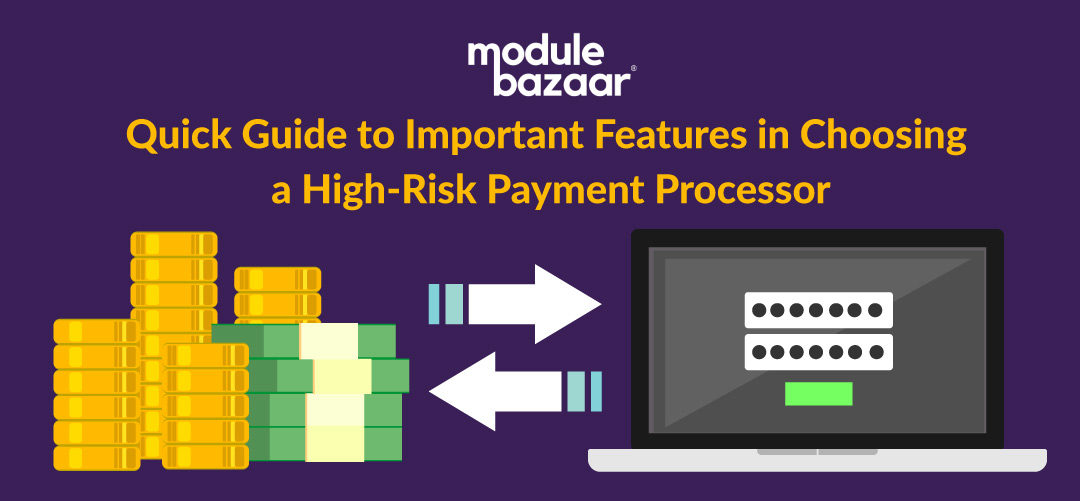Share the post "Quick Guide to Important Features in Choosing a High-Risk Payment Processor"
There are different pricing models, fee types, and features to look out for in high-risk payment processors. Review all of these qualities to understand the true cost to your business, rather than choosing based on the most visible costs.
Pricing
- Flat-rate pricing– Pay the same rate for all transactions, regardless of the risk level of chargebacks or fraud.
- Tiered pricing- Multiple tiers based on the level of risk, allowing merchants to pay less for safer transactions.
- Qualified Rate- Covers the most secure and least risky transactions, including in-person, chip-and-pin card payments.
- Mid-Qualified Rate- Transactions that don’t follow all standards for qualified rate level, and are charged a higher rate.
- Non-Qualified Rate- Transactions with a high risk of fraud or reversal, including eCommerce credit card transactions and other payments without the card present.
Transaction Fee Breakdown
- Interchange fee- fees for processing payments from credit/debit cards
- Percentage Transaction fee – A percentage of the amount paid by a credit/debit card.
- Fixed Transaction fee – A fixed amount paid on each transaction processed.
Different Types of Additional Fees
- Account fees- cover the costs of running your account, and may be billed monthly or annually.
- Refund Fees – charged when you submit your customer’s refund to the payment processor.
- Chargeback Fees- Additional fee charged when customers issue chargebacks on credit card payments paid to you, based on your business’s level of risk.
- PCI Compliance Fee- Fees to encourage compliance with technical and operational standards for safeguarding credit card information.
- Termination Fee- Charged if you terminate your merchant account early, either a contractual flat fee or liquidated damages, which penalizes you based on the amount of time left in your contract.
Payment Processor Reserves
- Rolling Reserves- A portion of each payment processed is held by the processor, then released after 6 months to a year to the merchant on a rolling basis.
- Up-Front Reserves- The merchant pays a specified amount when their contract begins, based on their anticipated monthly earnings, which is held as long as the contract lasts.
- Capped Reserves- Instead of paying up-front, a portion of each payment is taken until it reaches a threshold, which is held as long as the contract lasts.
Read also :-Factors consider before selecting a Payment Gateway for your eCommerce store
Additional Services from Payment Processors
- Fraud Prevention and Detection- Processors can offer various features, from support for the 3-D Secure credit card security standard to automated filters that detect likely fraud.
- 24/7 Payment Success Rate Monitoring – Get monitoring of all transactions to get alerted when payments are not processed successfully for any reason.
- 24/7 Chargeback Monitoring & Alerts- Get notified when chargebacks occur so you can dispute them as quickly as possible.
- 24/7 Tech Support- Get tech support to prevent technical obstacles to payments and reduce downtime on your merchant account.
- Chargeback Support- Get help when disputing fraudulent chargebacks to keep your chargeback rate low.
- Multiple Currencies & Languages- Sell better globally with language and currency support for customers using payment gateways and processing services.
- Support for Mobile & In-App Payments- Get a payment processor that integrates with mobile devices and apps without any inconvenience to the customer.
- Convenient, Fast Checkout- Get a payment gateway that completes transactions quickly without overusing redirects and pop-ups, and enables 1-click purchases.


